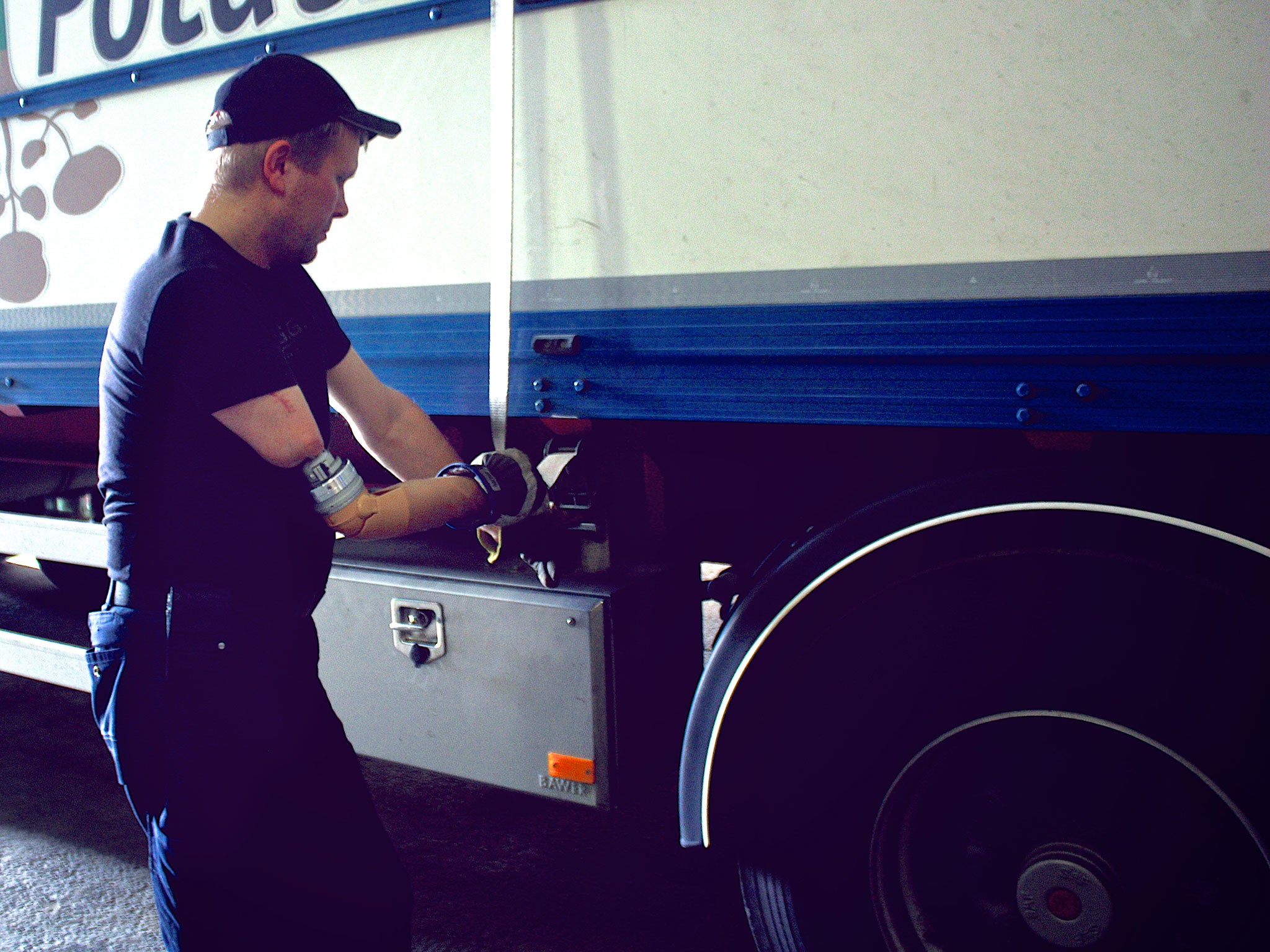Swedish man first to use mind-controlled prosthetic arm
A newly released video shows the patient using the pioneering technology which allowed him to keep his job as a truck driver

Your support helps us to tell the story
From reproductive rights to climate change to Big Tech, The Independent is on the ground when the story is developing. Whether it's investigating the financials of Elon Musk's pro-Trump PAC or producing our latest documentary, 'The A Word', which shines a light on the American women fighting for reproductive rights, we know how important it is to parse out the facts from the messaging.
At such a critical moment in US history, we need reporters on the ground. Your donation allows us to keep sending journalists to speak to both sides of the story.
The Independent is trusted by Americans across the entire political spectrum. And unlike many other quality news outlets, we choose not to lock Americans out of our reporting and analysis with paywalls. We believe quality journalism should be available to everyone, paid for by those who can afford it.
Your support makes all the difference.A Swedish arm amputee has become the first person to be able to control his prosthetic limb with his mind, allowing him to keep his physically demanding job as a truck driver. Thanks to the newly developed artificial arm, he is now also able to handle delicate items such as eggs and tie his children’s ice skate laces.
The 42-year-old patient, identified only as Magnus, lost his arm over ten years ago. Last year, he was fitted with the experimental prosthesis by researchers at Chalmers University of Technology in Gothenburg, who have now published a paper on the success of his treatment in the journal Science Translational Medicine.
Instead of using sockets to attach the prosthesis, Magnus’ new arm is attached directly to his humerus, or upper arm bone, providing a mechanically stable connection.
“We have used osseointegration to create a long-term stable fusion between man and machine”, says Max Ortiz Catalan, research scientist at Chalmers University of Technology and leading author of the study.
In a similar way, Magnus’ nerves and muscles are directly hooked up to the machine’s control system via neuromuscular electrodes, creating “an intimate union between the body and the machine; between biology and mechatronics”.
Most prosthetic limbs make use of electrodes which are stuck to the surface of the skin. This approach has major limitations, because of interference from electrical activity elsewhere in the body, known as “cross-talk”. In addition, the constant pressure from the sockets used to secure traditional artificial limbs can cause pain and tissue damage. These problems lead to many amputees giving up on their prostheses.
Magnus is the first ever patient to be able to make use of the new style of limb at home, allowing him to benefit from its advantages in his daily life. “Going beyond the lab to allow the patient to face real-world challenges is the main contribution of this work,” Ortiz Catalan said.
The next step for the researchers is to develop a prosthesis which allows the patient to feel sensations. At the moment, this is only possible in controlled conditions in the lab, but the team has high hopes for Magnus being able to use this function on his own soon. The interface used in the new design is already set up to be bidirectional, so that signals can be sent from the surface of the artificial arm to the patient’s brain.
Ortiz Catalan and his colleagues believe limbs like the one Magnus has been using will be available to the public within a few years’ time.
Join our commenting forum
Join thought-provoking conversations, follow other Independent readers and see their replies
Comments